Tree landscaping ideas - expert advice for planting and growing a beautiful space
Tree landscaping ideas help to embed your trees into the yard, offering a pretty contrast and a way to create a meadow feel


Tree landscaping ideas have divided opinion. There are many schools of thought on what, if anything, should be planted around the base of a tree. While some design purists prefer the simplicity of a lone tree with only grass beneath it, many take the opportunity to lend interest and style to the surrounding area.
“To help you select what plants will grow well at the base of a tree, consider the roots,” explains landscape architect Jana Bryan of Julie Moir Messervy Design Studio. “Whether your tree has a deep taproot or more shallow spreading roots near the surface will determine what can be planted around it.”
When it comes to the landscaping aesthetics, Jana suggests taking into account the tree’s overall shape. “A vase-shaped tree can be placed among upright perennials, while a weeping tree is complemented by lower horizontal forms. If it’s a multi-stemmed tree and the goal is to have a filtered view, then you’d want the plants at the base to mingle with the stems of the tree.”
Read on more tips from the experts on incorporating trees into any landscaping ideas, no matter the style.
Tree landscaping ideas
1. Create a meadow with flowers suited to shade
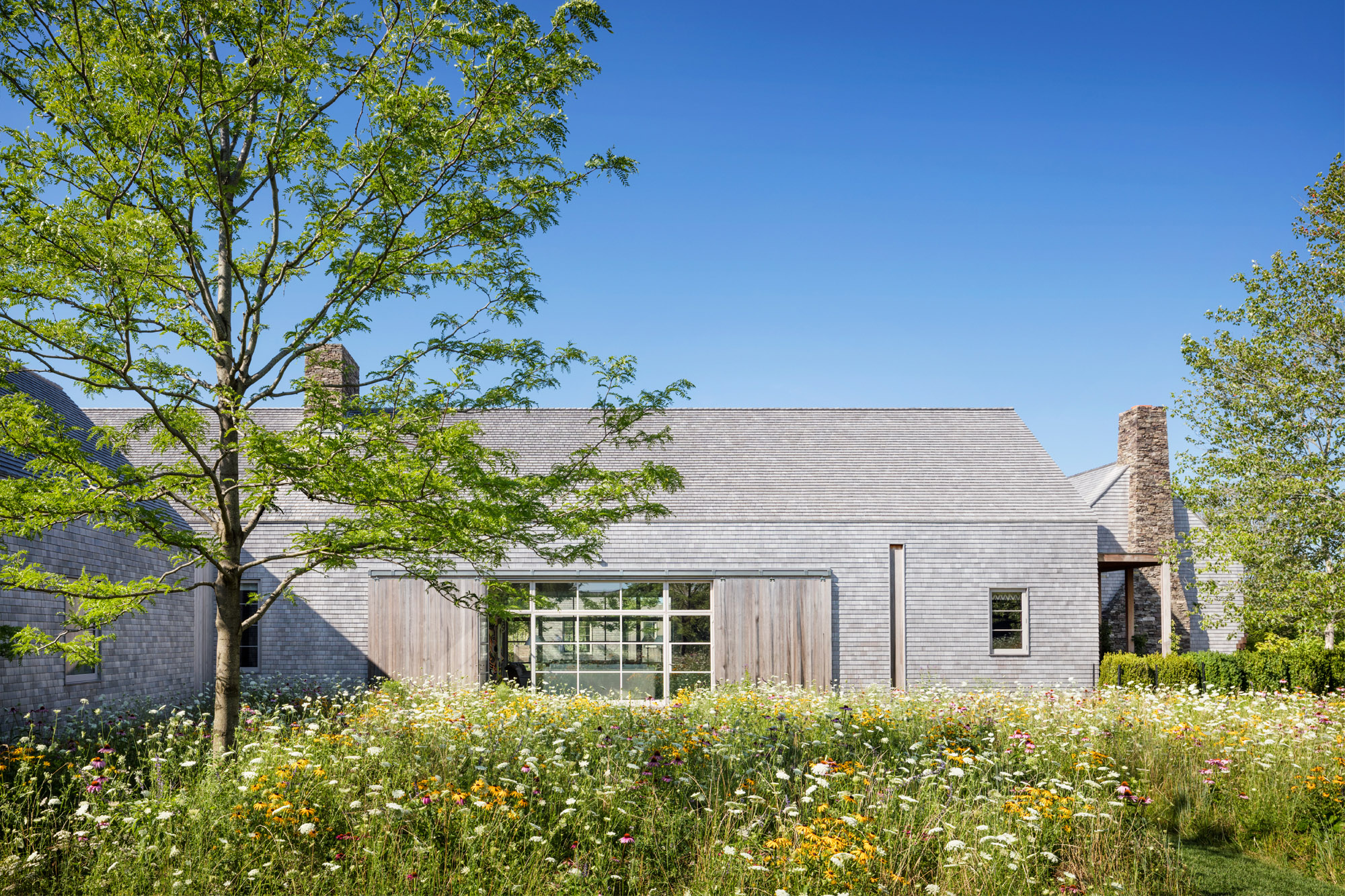
Landscape contractor Summerhill Landscapes worked with the project’s landscape architect to transform what was initially a vacant lot into a colorful meadow.
“This serves as the clients’ summer house, so they wanted a property that could be easily maintained, with very little lawn,” explains Summerhill’s Tom Volk. After testing the soil and going through the site characteristics, the firm helped select both native and non-native flowers—including Queen Anne’s lace, echinacea, and rudbeckia—to surround a single honey locust tree. The result is a low maintenance garden that sings with insects and wildlife.
“Honey locusts are a nice choice for a meadow because sunlight will penetrate through to the plants below,” says Tom. “Still, be sure to select flower species that don’t require full sun if there are trees around.”
The Livingetc newsletters are your inside source for what’s shaping interiors now - and what’s next. Discover trend forecasts, smart style ideas, and curated shopping inspiration that brings design to life. Subscribe today and stay ahead of the curve.
2. Use plants that match other parts of your landscape
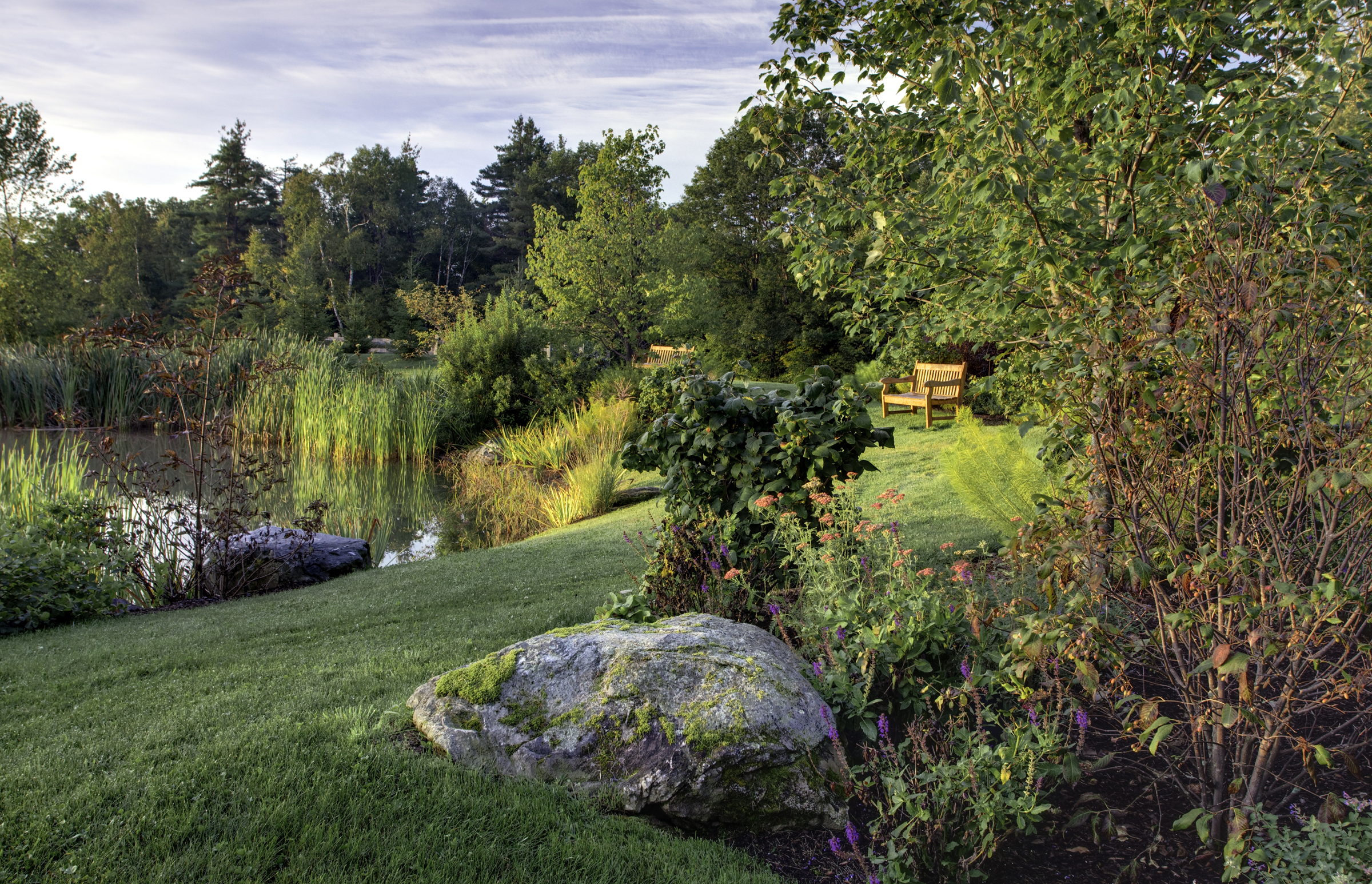
A main focal point at this residence is the existing pond, so Julie Moir Messervy Design Studio created a scheme that celebrates the views and the pond’s surrounding color palette. The design borrows thinking from Japanese gardens, using rocks and water and sculptural trees.
“For this collection of trees and shrubs in the foreground, we selected foliage colors that tie into the plantings at the pond’s edge,” notes Jana Bryan, a landscape architect at the firm. The red flowers around the tree's base nod to the red leaves seen by the waterside. “The boulders and bench in the distance are meant to carry a visitor through the landscape, offering moments to pause and take in the view.”
3. Plant grasses for a woodland feel

Wild grasses are soft, pretty, and a contrast to the bolder shape of a tree. While we've seen a return of pampas grass, this wasn't quote the vibe the landscapers wanted here. As this residence is surrounded by woods, the owners wanted to blend the landscaping into its enviroment. And because there were plenty of tall trees, plantings that could withstand shady conditions was a must.
Summerhill Landscapes planted a formal-looking allée of linden trees, pruned using a traditional European technique, and surrounded them with a textural carpet of carex pensylvanica sedge.
“Carex is one of the few grasses that can grow in partial shade,” explains the firm’s Tom Volk.
4. Choose soft flowers for a gentle ambience
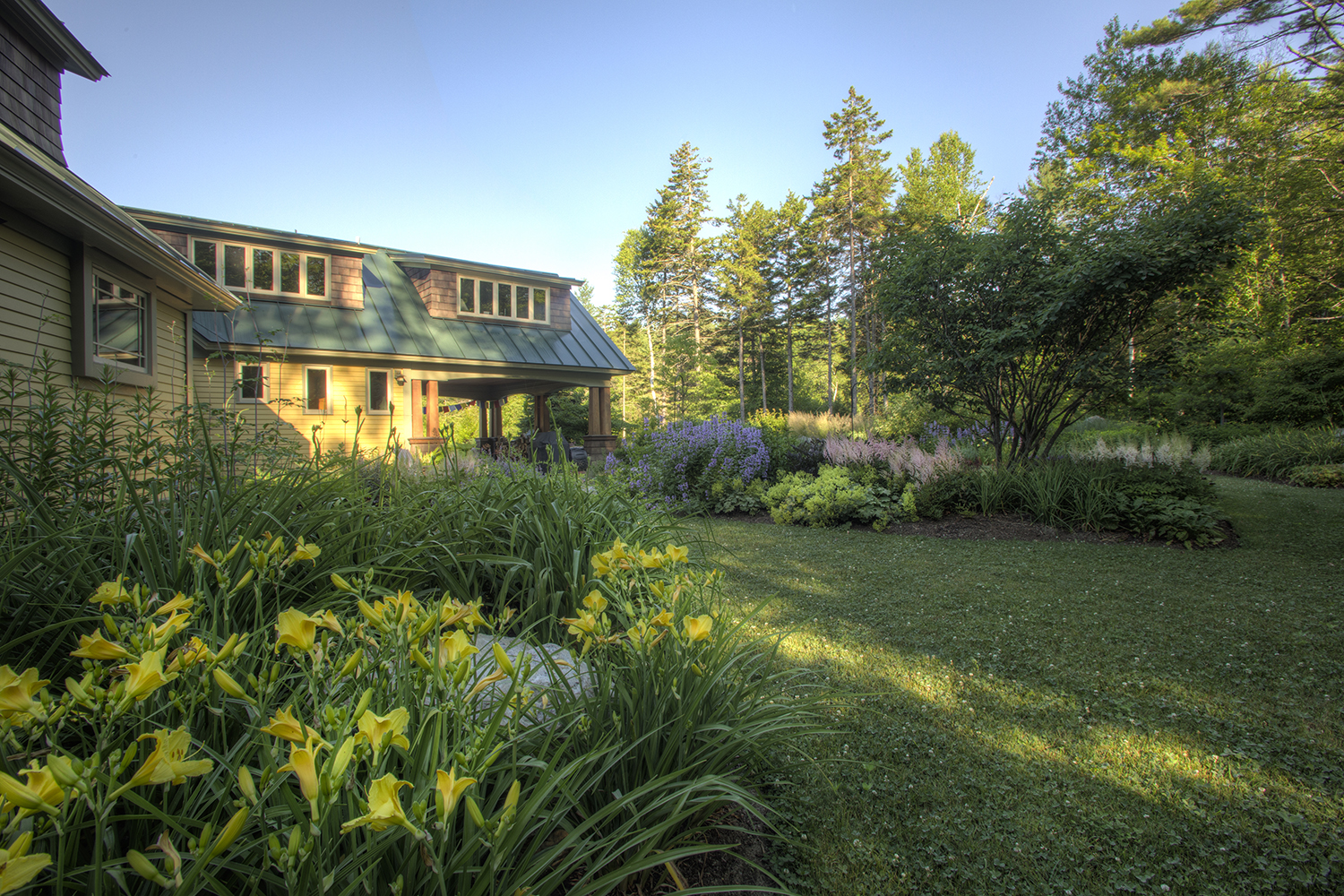
At this property designed by Julie Moir Messervy Design Studio, a colorful flower bed planted with blooms, grasses and a taller amelanchier enhances the scenery. They help to create a pretty vista for people enjoying the adjacent covered sitting area.
Aside from a variety of grasses, the firm chose perennials with “airy flower plumes, including astilbe and alchemilla,” according to landscape architect Jana Bryan. “The relaxed, soft textures create a gentle edge around the sitting area.”
5. Include flowers to bloom all year round

Landscape architect Brian J. Mahoney redesigned this property, which previously featured a lawn that extended all the way up to the back of the house.
In an effort to “homogenize the ins and outs of the rear façade,” Mahoney conceived a path, ideal for a narrow garden at just three feet wide, lined with crape myrtles and flowers that “exude color from early spring to fall.”
Among the other plantings are dianthus, phlox, clematis, lavender, nepeta, iris, pansy, petunia, hydrangea, and rose. “With this very narrow garden path, we were trying to create the feeling of being in a lush English cottage. There’s always something exciting popping up.”
6. Leave an area for rewilding
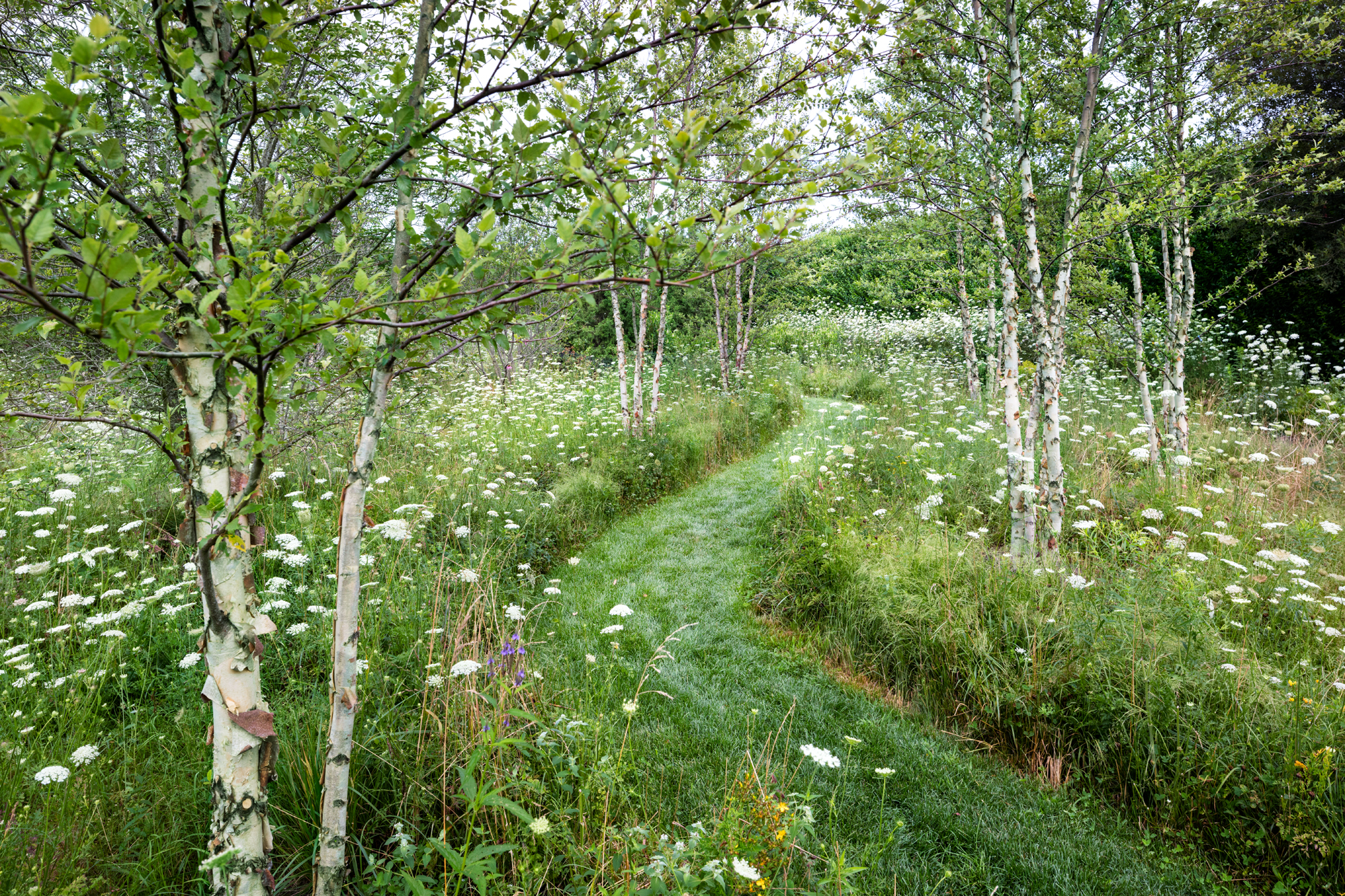
Summerhill Landscapes helped reimagine a blank slate, transforming a former potato field into an enchanting meadow.
River birches are now enlivened by Queen’s Anne’s lace, echinacea, and grasses. however that wasn’t always the plan. Taking some of the approaches of wildlife gardening, the aesthetic is very much left to Mother Nature.
“Not all of the species present were specifically planted there,” explains Tom Volk. “Certain plants starting creeping in from other areas of the property, which is always a fun surprise!”
The result is a wonderful haven, as attractive to people as it is to bees.
7. Cluster plants under trees to leave space for a path

To enhance the curb appeal of this residence, Julie Moir Messervy Design Studio planted lush beds on either side of a meandering stone path that leads from the driveway to the front entry.
Two crabapple trees - a key tree in current garden trends - flanking the path are underplanted with a mix of perennials, “offering a range of bloom times and colors to provide a cheerful welcome throughout the summer,” notes landscape architect Jana Bryan.
The trick is to fill the beds around the trees but leave space either side of the path, so the walkway is welcoming rather than overgrown.
8. Stick to a simple palette for a modern aesthetic
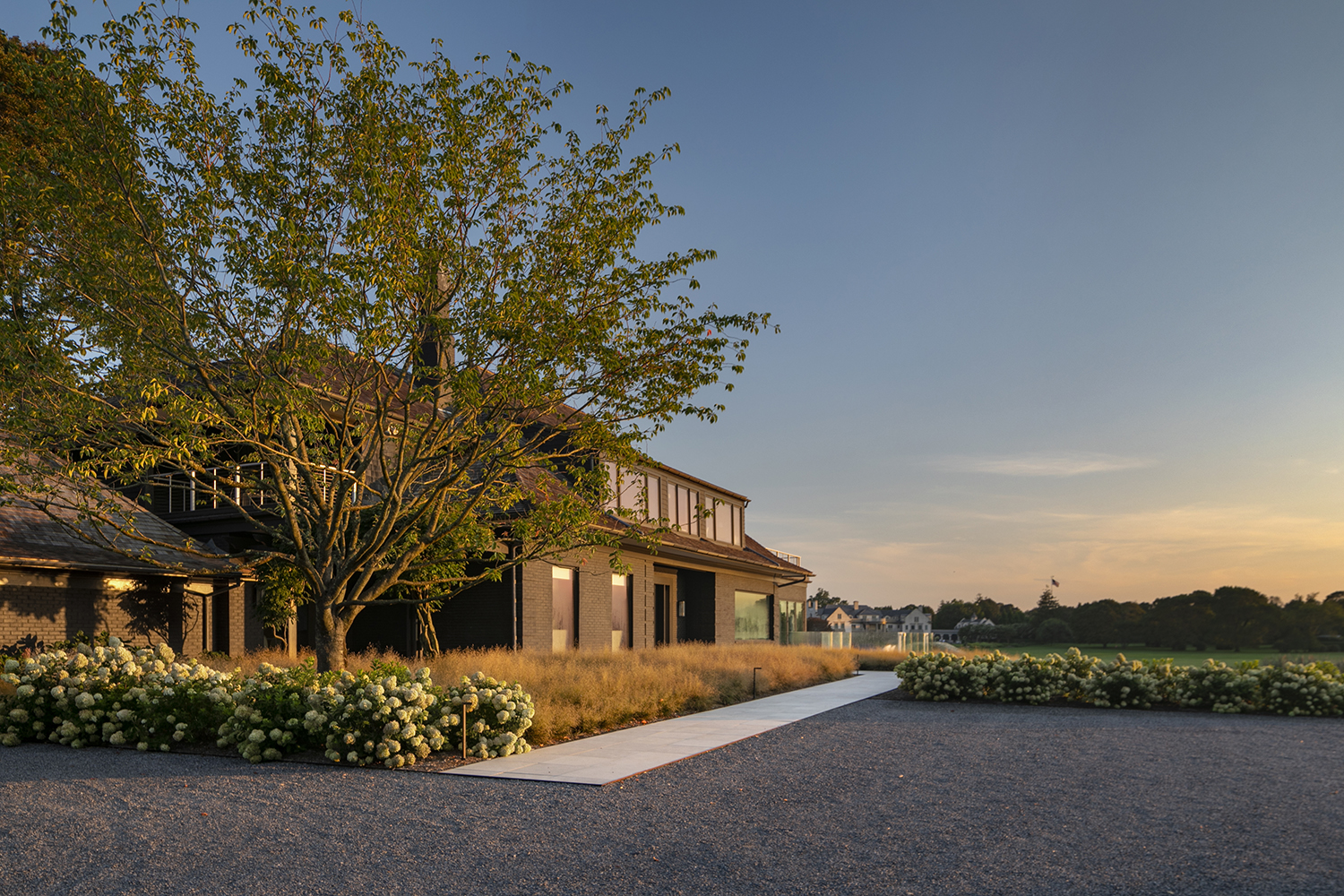
According to Tom Volk of Summerhill Landscapes, this particular client asked for a clean, modern look. To complement the large Kwanzan cherry tree, which was carefully relocated from another area of the property, Summerhill helped the project’s landscape architect source the simple palette of hydrangea and goldtau grass.
“The process of moving the cherry was very involved,” says Volk. “We had to put it into holding while the house was being renovated, and then allow the roots to grow back before replanting it.”
By keeping the lush flowers underneath it to just one color - white - the tree is very much the star.
9. Look to the past for inspiration
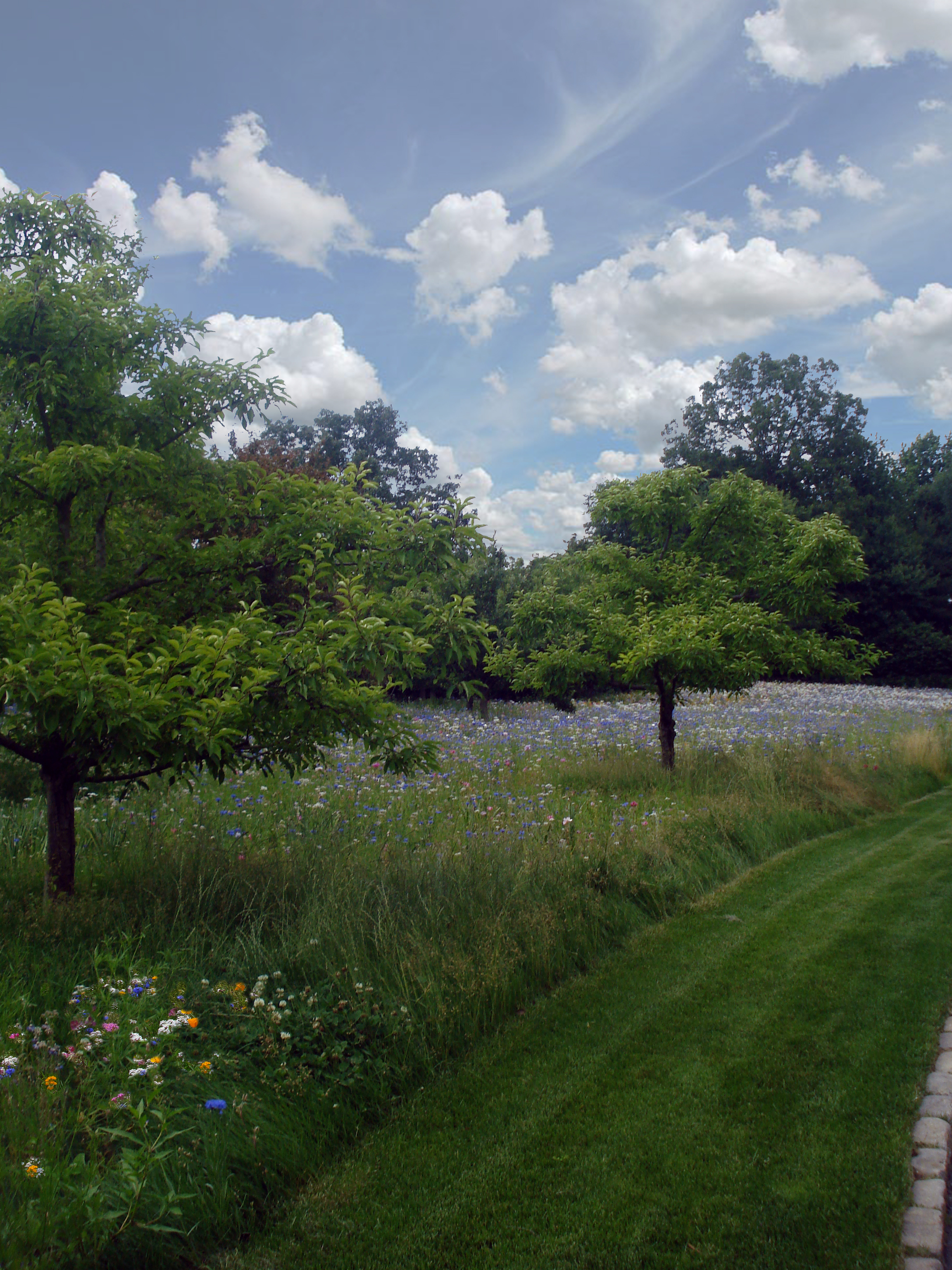
As part of a collaboration with landscape architect Simon Johnson, landscape architect Brian. J. Mahoney designed what essentially feels like an old, forgotten orchard.
“The owners had originally commissioned an orchard surrounded by lawn, but years later, they decided they wanted a meadow,” explains Mahoney, who planted both sun- and shade-loving perennials and annuals.
Now, fruit trees are surrounded by sweet alyssum, forget-me-nots, yarrow, and coreopsis. “Throughout the season, the color transitions from white, blue, and purple to yellow and orange.”
10. Build drama with an allée
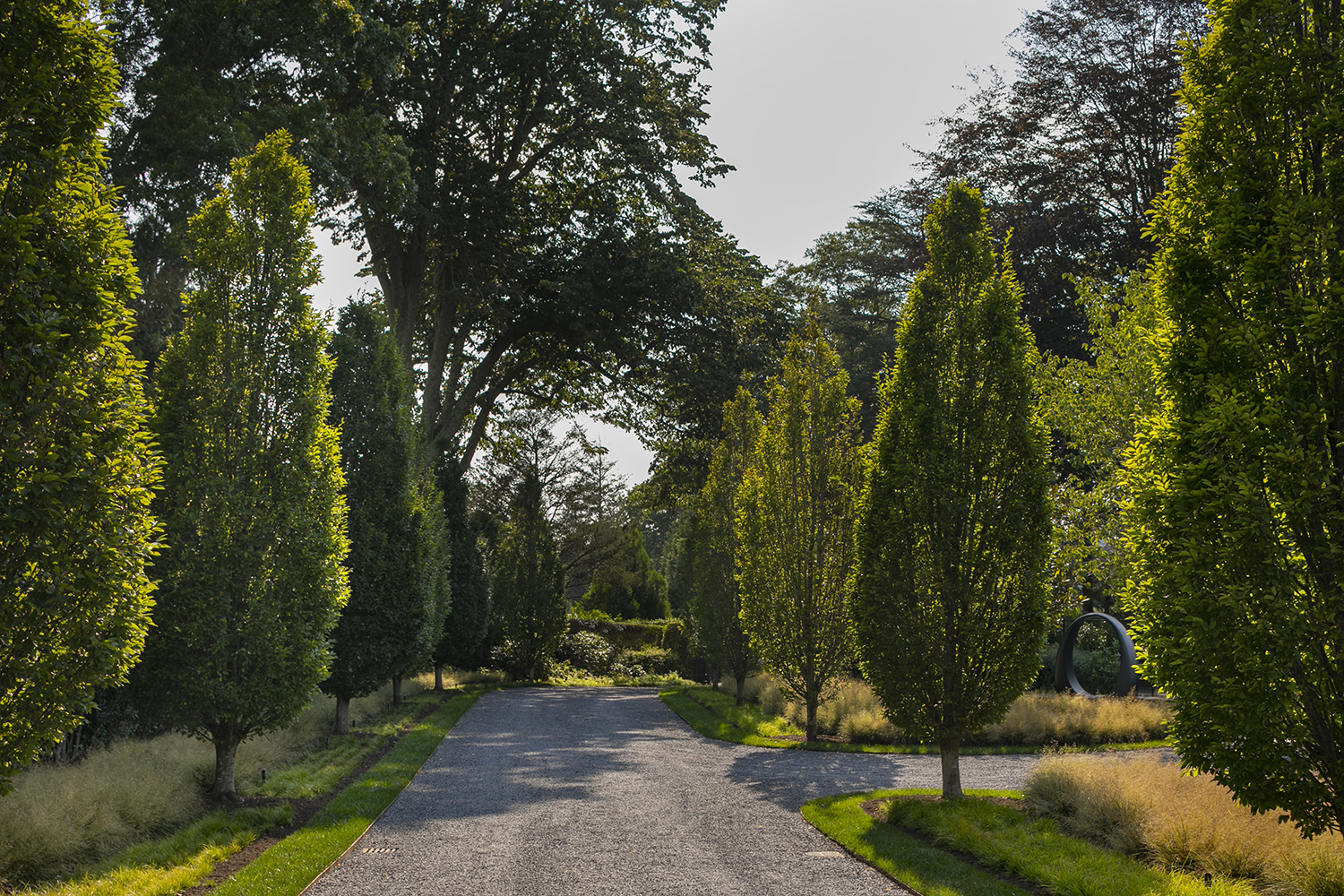
At this waterfront property, Summerhill Landscapes worked with the project landscape architect to install an allée of hornbeams. An allée is gardening-speak for walkway, and it evokes the sort of romantic afternoon strolls seen in Jane Austen movies or Bridgerton. Here, it's joined by tufted hairgrass to delineate a long driveway.
“The owner wanted clean lines,” says Summerhill’s Tom Volk. “There is a view of the water at the end of the drive, so the intent of the allée is to draw the eye toward the water.”
What do you put around the base of a tree?
When it comes to what to put around the base of a tree, thinking specifically about your tree and soil. “Every project is different,” says landscape architect Brian J. Mahoney, who cautions against piling up too much mulch at the base of the tree.
Instead, he suggests incorporating a groundcover of some sort, even if it’s just grass. However, a bed of plants is best in order to avoid the area near the roots “coming under seize of lawnmowers.”
Landscape architect Jana Bryan agrees that a groundcover is essential. “We use groundcovers at the base of a tree to anchor the tree while also allowing its form to be highlighted,” she says. “Additionally, planting shrubs of different heights, with the taller shrubs placed behind the tree, provides a nice backdrop.”

Alyssa Bird is a New York−based freelance writer and editor with experience covering architecture, interior design, travel, hospitality, and real estate. She has held editorial positions at Architectural Digest, Elle Decor, Hamptons Cottages & Gardens, and New York Cottages &Gardens. When she’s not writing about dreamy spaces, you can find her tweaking the decor in her own Brooklyn home, honing her green thumb, testing out a new recipe, or scouring for antiques.